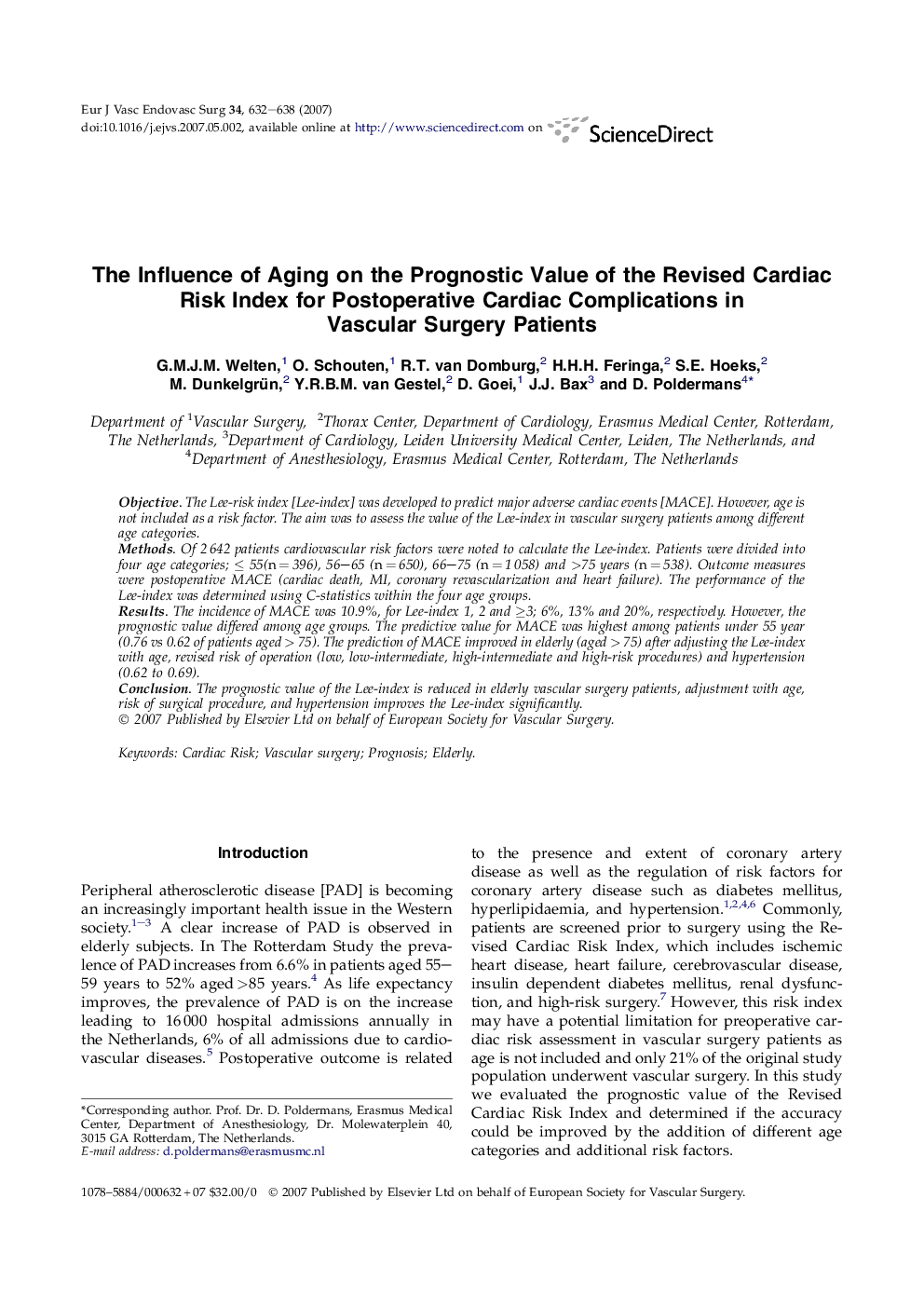| کد مقاله | کد نشریه | سال انتشار | مقاله انگلیسی | نسخه تمام متن |
|---|---|---|---|---|
| 2915328 | 1575536 | 2007 | 7 صفحه PDF | دانلود رایگان |

ObjectiveThe Lee-risk index [Lee-index] was developed to predict major adverse cardiac events [MACE]. However, age is not included as a risk factor. The aim was to assess the value of the Lee-index in vascular surgery patients among different age categories.MethodsOf 2 642 patients cardiovascular risk factors were noted to calculate the Lee-index. Patients were divided into four age categories; ≤ 55(n = 396), 56–65 (n = 650), 66–75 (n = 1 058) and >75 years (n = 538). Outcome measures were postoperative MACE (cardiac death, MI, coronary revascularization and heart failure). The performance of the Lee-index was determined using C-statistics within the four age groups.ResultsThe incidence of MACE was 10.9%, for Lee-index 1, 2 and ≥3; 6%, 13% and 20%, respectively. However, the prognostic value differed among age groups. The predictive value for MACE was highest among patients under 55 year (0.76 vs 0.62 of patients aged > 75). The prediction of MACE improved in elderly (aged > 75) after adjusting the Lee-index with age, revised risk of operation (low, low-intermediate, high-intermediate and high-risk procedures) and hypertension (0.62 to 0.69).ConclusionThe prognostic value of the Lee-index is reduced in elderly vascular surgery patients, adjustment with age, risk of surgical procedure, and hypertension improves the Lee-index significantly.
Journal: European Journal of Vascular and Endovascular Surgery - Volume 34, Issue 6, December 2007, Pages 632–638